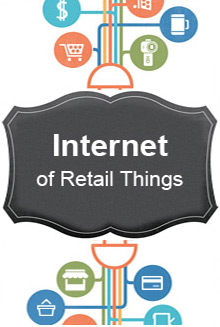The rapid advances in the technology landscape and proliferation of digital have taken customers beyond multi-channel to an Omnichannel retail experience. Global retailers that include the likes of Macy’s, Saks and Lowe’s have already moved in this direction enabling customers to shop anytime, anywhere and enjoy consistent and delightful experience.
Omnichannel retail aims at enabling sales initiatives through multiple channels – online, brick and mortar stores, social media, events, mobile, and the usual traditional sales efforts; at the same time creating consistent and uniform customer experience at each sales touch point. The channel operations are connected at the back end to provide the integrated, customer specific information whenever required. The availability of customer information across all channels through regular information sharing enables store representatives and online customers view the same data anytime, anywhere.
However, building an Omnichannel capability is easier said than done. It needs a totally integrated operation across all customer touch points – store operations, marketing, call center, and digital (which includes all forms of non-store-based commerce). This is made all the more difficult because the traditional organizational structure creates siloes.
To take an example, let’s look at product and customer data. Data is generated in-store through point-of-sale systems, e-commerce and m-commerce platforms, the contact center, and other systems. This information is collected and stored across different systems because retailers have traditionally kept sales channels independent of one another. These systems generally don’t get the necessary attention to turn that data into real information assets. Rather than having a central repository that can syndicate product information out to the various channels, retailers create product assortments based on sales channels.
On the customer side, CRM systems are often struggling to get a single view of the customer. Customer information is among the most valuable assets in retail but it is rarely utilized properly. An order fulfillment system may be the lifeline of an Omnichannel experience but its deployment is usually deferred citing high investment costs, lack of integration with existing systems and lack of time and resources dedicated to deployment
Technical problems apart, siloed skills create their own issues. Disconnects exist between retailer’s business and technical staff. Open conversations are rare between the Chief Marketing Officer (CMO) and the Chief Information Officer (CIO) around people, processes and technology. There are separate heads for all the functions – marketing, finance, merchandising, HR, stores, who report into the CEO or the President. Very few people who have the holistic understanding of the business requirements are available and all of them are among the topmost C-level executives. Unfortunately their hands are always too tied up to take up and drive an operation like the creation of Omnichannel retail capabilities.
Organization level ownership, commitment and accountability is needed to break these silos and to drive synchronization and alignment. Since such a capability cannot be built without active involvement, monitoring, facilitation and support from the leadership, the creation of a dedicated senior level position responsible for Omnichannel becomes an imperative for the success of this initiative. This will be the omni-channel officer or Chief Omni Channel Officer, who has a good understanding of all the customer touch points, a holistic understanding of business needs and a direct reporting to the top leadership.
The Chief Omni Channel Officer will manage the development of strategies that will integrate the company’s stores, online and mobile activities; take on responsibility for systems and technology, logistics and related operating functions. It could also be a position different from the traditional Chief Marketing Officer (CMO) in the sense that it is becomes a P&L role where he/ she will also be looking after revenue generation activities along with a reasonable share of the profitability. Chief Omni Channel Officer will look after the store level/ digital level execution and will also be responsible for the ROI on marketing investment. Undoubtedly, the Chief Omni Channel Officer will have to play the prime role in accelerating digital growth while inseminating an organic acceptance of Omni-channel best practices across all departments of a company in such a way that it doesn’t affect the current high performing channels.
The ideal Chief Omni Channel Officer should be a candidate with an experience in store operations, call center operations, digital and marketing which is very hard to get. Someone with a strong digital/ marketing experience and exposure to the other business functions should be a good enough to handle the role properly.
Essentially, the operationalization of Omnichannel is an exercise in managing change and it should start at the very top with the leadership making it clear in no uncertain terms that this is one initiative that has been sponsored by them. All the stakeholders, right from the customer support executives in the stores to the senior C-level executives should brace up to whole heartedly support the initiative. Ultimately how effective an initiative has been depends as much on how it has been accepted as on how it has been implemented. This is critical to convert the Omni-channel investment into tangible long term returns and strategic advantage.

Salil is a former Happiest Mind and this content was created and published during his tenure.






